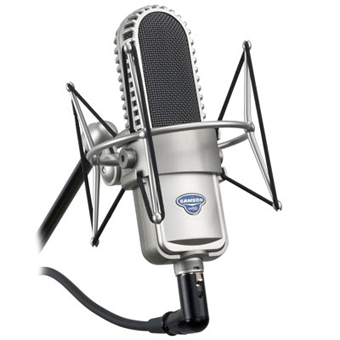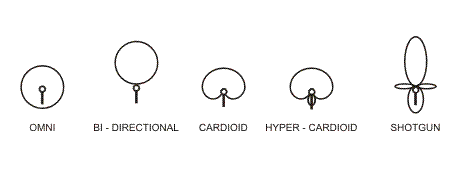There are different types of microphone and diverse ways of classifying them. Here, we will look at the polar patterns and diverse technologies available.
Microphones are designed with one purpose in mind, converting acoustic energy into electrical energy and as part of the process, they use a diaphragm. Now that the common ground has been pointed out, the concentration will be shifted to the differences.
Basically, there are 5 different types of microphone technologies:

- Carbon: Carbon dust was used by the earliest microphones for the purpose of identifying audio signal. Telephones used this type of microphones and still, they can be found in some of the telephones available today. In this case, carbon dust is used for the purpose of running current through and the carbon is compressed as a result of the fluctuating current as sounds waves hit the diaphragm.
- Crystal: In this type of microphone the crystals used change shape as a result of electrical properties change. A diaphragm is attached to crystal and the crystal creates a signal once the diaphragm gets vibrated by sound.
- Ribbon: In this type of microphone, a strong magnetic field is used for the purpose of suspending a thin metal wire. Current flowing through this is changed as the ribbon is moved by sound waves. This means that rather than this type of microphone responding to air pressure, it responds air velocity.
- Dynamic: In this case, the diaphragm is designed to move between 2 magnets (positive and negative) once hit by sound waves and because of this movement, a small current is created.
- Condenser: This type of microphone has been around for over a century and it requires external voltage which is also known as phantom power. The backplate and diaphragm create a capacitor. There is a varying capacitance because of the relation between the backplate and the diaphragm.
Polar pattern is the next category used to differentiate microphones and this refers to uniqueness of the region around the microphone from which audio signal gets picked up. In this case, there are 5 categories as well:

- Cardoid: Directly in front of the microphone there is strong sensitivity and this is coupled with rejection from behind and good sensitivity at the sides. (as shown in Fig)
- Supercardoid: Same as cardoid with the slight difference of reduced sensitivity around the sides. There is a small area behind the microphone that includes the pickup range (as shown in Fig)
- Hypercardoid: It is an exaggeration of Supercardoid with the sides sensitivity reduced and the rear featuring increased sensitivity (as shown in Fig). It is more direction than the other 2 cardoid patterns and as such used when maximum sound isolation between sources is needed.
- Omnidirectional: It equally picks up sound from all directions. It is the only one that is not affected by proximity (low range undesirable interference whenever a source of sound is close to the microphone)
- Bidirectional: This is ‘figure 8’ pattern which means sound gets picked equally from opposing directions. The sides do not show any sensitivity (as shown in Fig). In an interview direction, this microphone proves to be useful.














